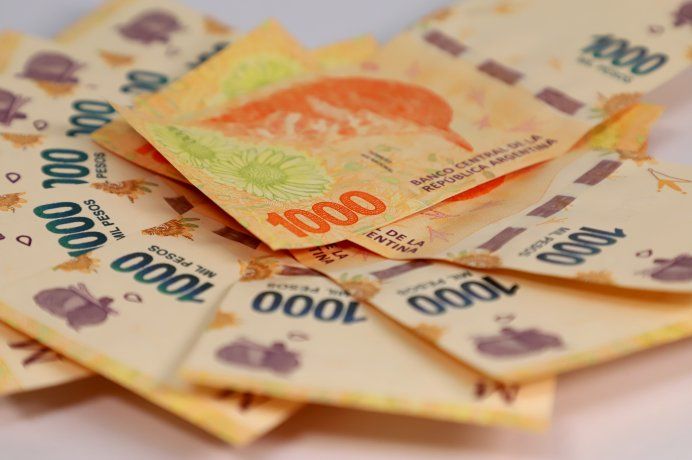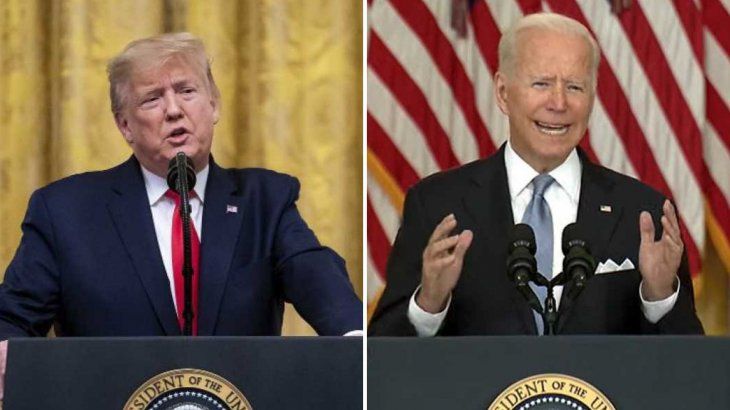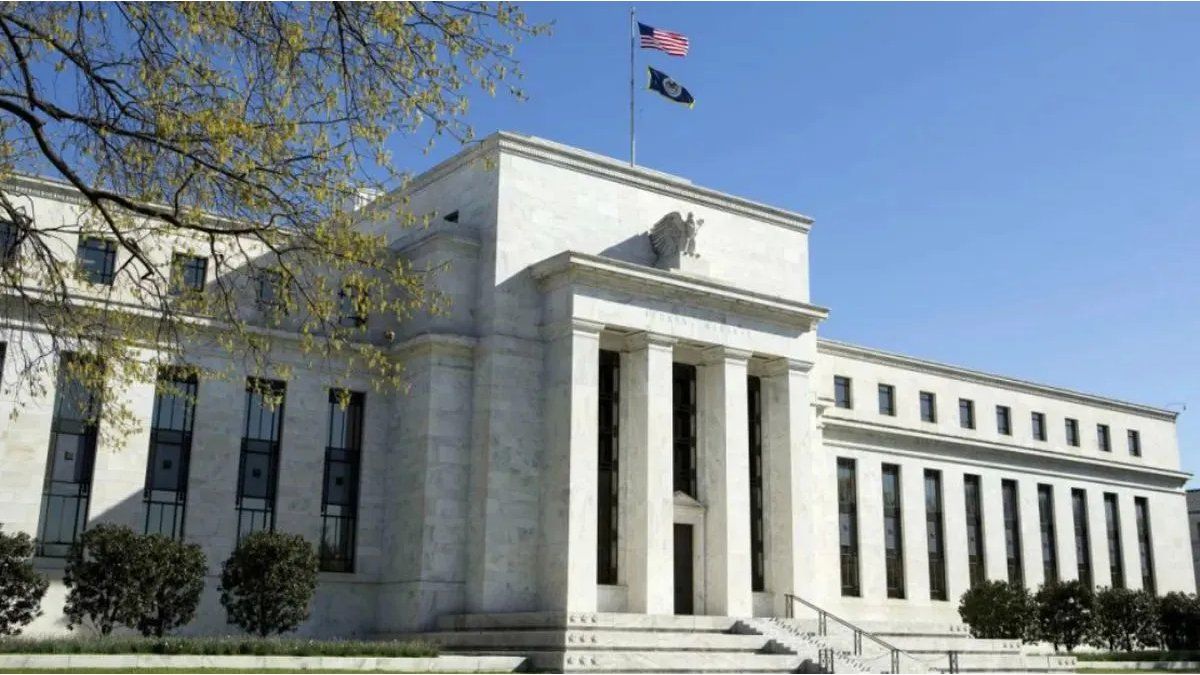The decline in interest rate of the early 1990s, enabled a strong influx of capital that was very expansive in emerging markets. The doubling of the interest rate in 1994 caused the “tequila effect” that hit Mexico, Argentina and numerous countries in a cycle of various crises (Asia, Russia, Brazil, Argentina, Turkey) until 2001 when a sharp drop in the rate began until 2004.
1.jpg
Jerome Powell, head of the Federal Reserve.
The interest rate hike cycle until 2007 It ends with the beginning of the international crisis of 2008, where for 14 years rate levels were observed at minimum values not seen in 50 years.
In 2022 Both the Fed and other Central Banks began to raise the interest rate. This increase strongly hit regional banks in the US and Europe starting in March 2023, with a special impact on banks focused on financing technology and real estate sectors hit by higher defaults derived from said increase.
Interest rate, financial crisis and debt in Argentina
In Argentina, exposure to interest rate It did not have a strong impact in the 21st century due to the fact that the country did not access voluntary financing in international capital markets since 2002 and when it did so in 2016 and 2017, the level of rates in the United States was between 0% and 2% %.
Beyond this, the high growth of the debt of the 52.6% of GDP in 2015 to 85.2% in 2018did trigger a financial and exchange crisis in March 2018, reaching 89.8% in 2019. In mid-2023 the debt was at levels similar to 2019, 88.4% of GDP, after reaching a maximum of 103.8%. at the end of 2020 due to the financing of pandemic spending.
Surely the link of the interest rate and the national economy It will be relevant again, given the official intention to reissue debt in the markets, which is why it is important to analyze what may happen to the North American economy.
Pesos Banknotes thousand 1000 Inflation Licua Interest Rate

How the Fed’s measure will impact Argentina.
Mariano Fuchila
The rate level of the USA may vary by external factors (geopolitical issues) or for reasons of politics and internal economy. Today we will focus on the latter.
It is expected that the US Federal Reserve lowers interest rates from June. Until weeks ago, three declines (0.75% in total) were expected in the second semester. The economic data of the last week cast doubt on the start of the decline and the amount of reductions.
The position of the members of the Federal Reserve It is divided but surely Powell will implement, barring new information, at least two reductions of 0.25% each. Just over half of analysts project that the declines will begin in June and 77% believe that the decline cycle will begin in July.
Employment, the key indicator
The main indicator was the monthly employment data for March. In that month they created 303,000 jobs, when an increase of between 150,000 and 250,000 was expected. Also unlike previous reports, the preliminary data for January and February was revised upward by 22,000 new positions.
The unemployment rate fell from 3.9% to 3.8%. Although both indicators reflect robustness in the labor market, there are data that reflect stability or a certain weakness that we will have to see how it evolves in the coming months.
Stability is given because in March, average income rose 0.3% month-on-month, as expected, compared to 0.2% (revised by one tenth upwards) in the previous month. In interannual rate, the advance is 4.1% compared to the previous 4.3%.
SMEs-production-employment

Reuters
Although wage developments weaken, they still remain well above the 3.5% that the Fed estimates can help drive the 2% inflation target.. The figure is significantly lower than two years ago (5.9%), but higher than before the pandemic (the annual average for 2019 was 3.3%).
The weak aspects are given because the household survey shows that full-time employment fell for the fourth consecutive month (to 132.94 million), which implies the lowest level of full-time employment since January 2023, while the Part-time employment increased to an all-time high of 28.632 million.
Furthermore, the duration of unemployment increased in March. Those employees with highly in-demand skills – especially in industries that are inelastic to the economic cycle, or industries that benefit from the spending of wealthier households – continue to find work, but there is less demand in sectors with lower training or more cyclical sectors.
An important data that the Fed will now look at will be the Consumer Price Index for Marchwhich is published the week that begins and the April labor report which will be known at the beginning of May.
The fierce political campaign between Biden and Trump ahead of the November elections.
The director of the US Congressional Budget Office, Phillip Swagel, argued that the rapid increase in the fiscal deficit in the United States generates a high risk of a market shock and a ‘run’ on the dollar. and that the federal debt is on an “unprecedented” growth trajectory. OPC projections predict that debt levels would increase to 166% of GDP by 2054.
TRUMP BIDEN

NA
In 2023 in United States The bipartisan negotiation to raise the debt ceiling took time and caused the risk of default. Treasury bonds lost their AAA category.
In virtue of a possible new conflict on the debt in the middle of an election year, with the difficulties What the Biden administration faceswith Republicans holding back increased funding for Ukraine and other spending, the market is carefully monitoring the buildup of Treasury funds at the Fed.
The government of the USA It maintains an average of US$700 billion in its general account at the Fed. (TGA). Operators expected the balance to reach around US$750,000 million, with slight fluctuations due to the maturities and issuance of the different bonds.
Historically, the average balance ranged between US$300-400 billionexcept during the pandemic and other specific episodes of stress (financial crisis, debt crisis in the second Obama administration).
To date the amount has already exceeded US$800,000 before receiving a large injection of liquidity, since in the coming weeks strong tax revenues are expected in USA.
markets-wall-street-shares-stock-markets-investments-finance-fed-federal-reserve

Reuters
For some operators, this accumulation of funds is a preliminary step to a strong release of liquidity in the economy. It is expected that the balance can exceed US$1 trillion which means that the Treasury can inject liquidity into the North American economy for an estimated amount of US$250,000 million with which to support both the economy and the markets in an election year. A kind of “small money plan”.
In fact, according to the latest surveys, the increase in the fiscal deficit in USA to resolve the war in Ukraine, reduced growth and high inflation translated into a significant loss of social support for President Biden from his own electorate.
The Government can lower taxes or increase spending, or a combination of both in addition to increasing credit to allocate funds to families and companies, additional income to encourage consumption and activity, to try to improve Biden’s electoral chances.
As we see, there is high uncertainty in the interest rate and in the North American economy, both due to internal factors and USA as geopoliticians, enhanced by being an electoral year. This may introduce greater volatility in global markets that affect Argentina.
An issue to analyze not only from a current perspective but also with a medium-term vision: the degree of vulnerability that a strategy of greater indebtedness can produce if the degree of openness and international financing is not carefully calibrated in an already indebted country, such as Unfortunately, we have lived through diverse experiences in recent decades.
Source: Ambito
David William is a talented author who has made a name for himself in the world of writing. He is a professional author who writes on a wide range of topics, from general interest to opinion news. David is currently working as a writer at 24 hours worlds where he brings his unique perspective and in-depth research to his articles, making them both informative and engaging.




